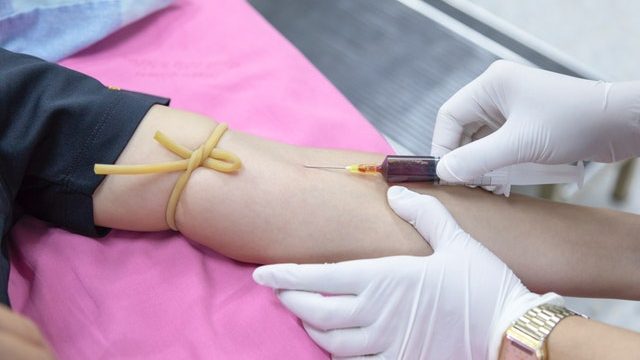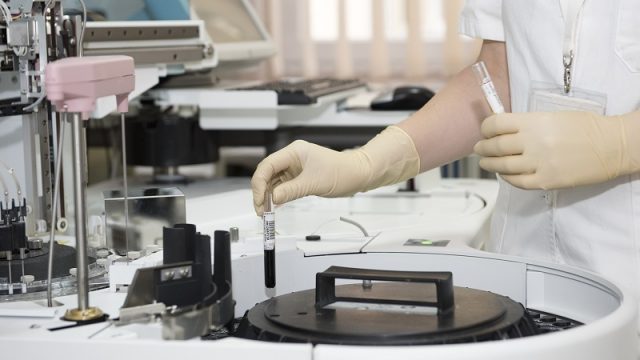Colposcopy is a procedure wherein the doctor examines the cervix (neck of the womb) through a special magnifying device called a colposcope. This allows the doctor to examine the cervix and identify problems that cannot be seen with the naked eye.
Indications For Colposcopy
1- For evaluation when results of cervical cancer screening tests i.e. Pap test show abnormal changes in the cells of the cervix.
2- Examination of Genital warts on the cervix
3- Cervicitis (an inflamed cervix)
4- Examination of any growth on the cervix.
5- To take a biopsy
6- For treatment of lesions on the cervix
Procedure
For at least 24 hours before the test, the patient should not use tampons, vaginal medications, lubricants, creams, and should avoid sex.
Colposcopy is an outpatient procedure easily done in the doctor’s clinic. It is best done when the patient is not in her periods. Anesthesia and fasting is not required.
It is done in the same position as for a routine vaginal examination. A Speculum is used to see the cervix. The doctor may use a few different chemical liquids (acetic acid and iodine) to stain the cells of the cervix for the identification of various changes that help in the diagnosis of abnormalities. A biopsy can be taken from these abnormally stained areas. Endocervical and endometrial samples can be taken if required. The procedure is very safe and usually does not cause any serious problems.
With the availability of technology, most of the procedures can be seen by the patient as it is done. Patients are also able to get color photographs of the cervix as a record.
Results of a Colposcopy
The result of your colposcopy and/or biopsy will be either normal or abnormal. If Abnormal areas are identified, then a biopsy is taken from those areas. When the biopsy reports are available then colposcopy is used to treat the areas that are abnormal.
Biopsy reports may be as follows:
CIN – cellular intra-epithelial neoplasia.
CIN 1 – This suggest mild changes and may settle down over some time. This is not likely to progress to cancer.
CIN 2 – This suggest a moderate chance the cells will become cancerous.
CIN 3 – this suggests a very high chance the cells will become cancerous.
CGIN – this indicates abnormal glandular cells and it suggest that there is a high chance the cells will become cancerous.
CIN2, CIN 3 AND CGIN require treatment. The aim of treatment is to remove the area containing the abnormal cells. This is done during colposcopy. The abnormal area is removed using various modes of treatment.
Types Of Treatment
LLETZ
The most common treatment is a large loop excision of the transformation zone (LLETZ). It involves removing the abnormal cells using a thin wire loop that’s heated with an electric current. This is done at the same time as colposcopy but under local anesthesia. Usually, the patient can go home on the same day.
Other Treatments
Cone Biopsy
It is a surgical procedure to cut out a cone-shaped piece of cervix containing the abnormal cells. It is done when a large area of tissue needs to be removed. It is done in the operation theater under anesthesia and will require maybe a day in the hospital after the procedure for observation.
Cryotherapy – the abnormal cells on the cervix are frozen and destroyed (this is only used to treat minor cell changes). This is an outpatient procedure.
Laser treatment – a laser is used to destroy abnormal cells on your cervix.
After the procedure, the patient is advised:
1- To avoid using tampons or menstrual cups for 4 weeks.
2- To avoid sex for 4 weeks
3- Avoid swimming for at least 2 weeks
Patients can use sanitary napkins. They will be given a plan to follow up pap tests and /or colposcopy. It is important to follow the surveillance plan.
Side effects of the colposcopy are:
1- Mild pain and cramps in the lower abdomen. Usually settles in a few hours with pain killers like paracetamol or ibuprofen.
2- Light vaginal bleeding and/or discharge. This also settles in few hours or days.
3- Infection – this will present as foul-smelling discharge and/or bleeding. This is treated with antibiotics.
In the long term, a patient may have slightly increased chances of premature birth especially if large areas of the cervix have been removed.
Pap smear is an important screening test and colposcopy is the next step in case there are any abnormal cells seen in pap reports.
Colposcopy is a safe procedure and allows further biopsy and treatment in the same setting.










































































































